Understanding Footprint Real Estate in Dubai


Intro
Dubai's property market is as dynamic as the city itself, where tradition meets innovation in the most striking of ways. Among the myriad of investment avenues available, footprint real estate, which focuses on the land area occupied by a property, has emerged as a focal point for both investors and homeowners. Understanding this niche becomes essential for navigating the bustling real estate landscape in Dubai. As the city continues to expand and evolve, grasping the nuances of footprint real estate not only illuminates potential investment opportunities but also defines the future pathways homeowners may explore.
In this article, we embark on a journey to unpack the significance of footprint real estate within Dubai's ever-changing market. We'll delve into key investment opportunities, current market trends, and projections that are shaping the future of this unique segment. Let’s begin by examining the investment opportunities available to astute investors and property managers ready to delve into this vibrant marketplace.
Investment Opportunities
Top Neighborhoods for Investment
When considering investment in footprint real estate, identifying prime locations is crucial. Some of the most promising neighborhoods in Dubai include:
- Dubai Marina: A hub for luxury living, the Marina offers a diverse range of properties that capitalize on stunning waterfront views. With high rental yields, this area remains a top choice for investors.
- Jumeirah Beach Residence (JBR): Known for its beaches and vibrant lifestyle, JBR sees a constant influx of tourists and residents alike. This neighborhood’s footprint real estate opportunities are perfect for short-term rental strategies due to its strategic tourist appeal.
- Downtown Dubai: The heart of the city, featuring iconic structures such as the Burj Khalifa, offers high-stakes investment opportunities. Properties here are always in demand, aligning well with high-net-worth individuals looking for premium living spaces.
- Arabian Ranches: Ideal for families, this suburb boasts spacious villas and a tranquil environment. The growing demand for quality residential spaces makes it an attractive option for long-term investors.
Upcoming Developments to Watch
Dubai is always under construction, with numerous projects reshaping the urban landscape. Key upcoming developments to keep an eye on include:
- Dubai Creek Tower: Once completed, this tower aims to surpass the Burj Khalifa, bringing new luxury apartments and commercial spaces.
- Mohammed Bin Rashid City: This massive project will offer residential, commercial, and entertainment options, enhancing Dubai's appeal as a global destination.
- The Red Line of the Dubai Metro: Expansion plans for the Metro include several stations that will service newly developed areas, pushing property values in neighboring regions upward.
"Investors should always keep a finger on the pulse of emerging neighborhoods; tomorrow's top investment could be yesterday's hidden gem."
Market Trends
Current Market Analysis
As of now, the Dubai real estate market has shown resilience against global economic fluctuations. The demand for luxury properties continues to rise, fueled by foreign investments. Footprint real estate, tied closely to factors like location and amenities, is thriving as homeowners seek larger spaces where they can enjoy an outdoor lifestyle. The rental market remains robust, further reinforcing the allure of investing in footprint properties.
Future Projections and Trends
Looking ahead, several trends are likely to shape the trajectory of footprint real estate investments in Dubai:
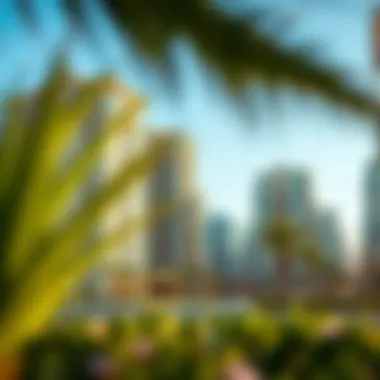

- Sustainability and Smart Living: There is a noticeable push toward sustainable living solutions in property design, discussing integrating technology that enhances living standards while minimizing environmental impacts.
- Increased Regulations: As the market matures, regulations surrounding property ownership and tenant rights will become more defined, creating a clearer pathway for investors and homeowners.
- Emphasis on Community Spaces: More developments are incorporating communal areas that focus on building communities, appealing particularly to families and expatriates who wish to establish roots.
In essence, the interplay of these factors not only creates a stimulating environment for investors but also ensures that those looking for their forever homes can find abundant options suited to their buyer profiles.
As we consolidate our insights, it’s apparent that the footprint real estate sector in Dubai is rich with opportunities, nuances, and future potential.
Defining Footprint Real Estate
Defining footprint real estate is crucial as it lays the foundational understanding necessary for navigating the complex Dubai property market. This segment of real estate focuses on the physical space that a property occupies, which bears significant implications for urban planning, sustainability, and economic value. For investors and homeowners alike, grasping what footprint properties are and their characteristics can unveil paths to informed decision-making in a market characterized by rapid development and shifting demands.
What is Footprint Real Estate?
Footprint real estate primarily refers to the surface area that a building, structure, or development occupies on a parcel of land. This concept encompasses not only residential and commercial buildings but also public spaces and infrastructure. It serves as an essential metric in urban development, highlighting the efficiency and utility of land usage in densely populated areas such as Dubai.
In a bustling city like Dubai, where land is often at a premium, understanding the nuances of footprint real estate becomes increasingly vital. Properties with smaller footprints might allow for larger green spaces or communal facilities, enhancing the livability of neighborhoods. On the flip side, high-rise developments maximize vertical space, creating a balanced urban landscape that addresses the needs of a growing population.
Key Characteristics of Footprint Properties
Footprint properties can be identified by several defining characteristics:
- Land Efficiency: It emphasizes how well the land is utilized, which can influence property values and living conditions. Smaller footprints could mean better community resources.
- Design Versatility: Developers often push boundaries to create innovative designs, squeezing functionality from limited spaces.
- Regulatory Compliance: Different zones in Dubai may have specific rules regarding maximum allowable footprints. Keeping abreast of these can protect against costly setbacks in development.
- Sustainability Considerations: Properties with smaller footprints can align more closely with sustainable practices, as they often incorporate green building techniques and energy-efficient designs.
Understanding these characteristics not only aids potential buyers in identifying promising investments but also allows property managers and developers to meet the evolving demands of consumers in Dubai’s dynamic market.
"The footprint of a property is not just about real estate; it reflects the heart of urban life itself!"
In summary, a clear definition and awareness of footprint real estate's characteristics serve as the first steps towards effectively navigating the Dubai market, making it a relevant focal point for anyone looking to engage seriously in property investment or development.
The Role of Footprint in Urban Planning
Footprint real estate plays a pivotal role in shaping the fabric of urban landscapes, especially in a dynamic city like Dubai. When urban planners design the built environment, the concept of footprint—referring to the area that a structure occupies on the land—becomes a significant focus. This is not merely about numbers and measurements; it concerns overall livability, economic viability, and sustainability. There are multiple layers to consider when assessing how footprint influences urban planning.
Impact on Land Use Efficiency
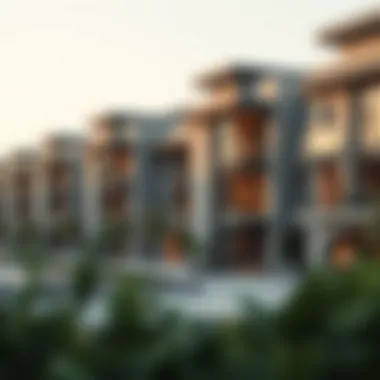
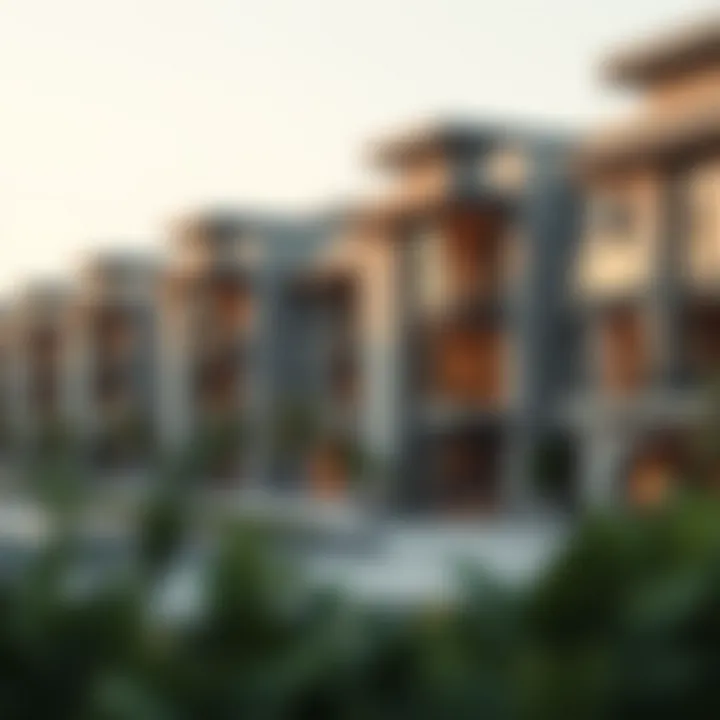
When examining land use efficiency, footprint properties can dramatically enhance how space is utilized. In high-density areas such as downtown Dubai, maximizing land use is crucial. Compact designs allow for more green spaces, public facilities, and housing units within a smaller area. This method of development enables the creation of vibrant neighborhoods where communities can thrive. Here are a few insights on how footprint affects land use:
- Density: The size of the footprint often dictates how many people can inhabit a given area, potentially leading to vibrant hubs of activity.
- Access to Amenities: Well-planned footprint properties lead to nearby access to essential services, reducing the need for long commutes, which goes a long way in minimizing traffic congestions and the associated environmental toll.
- Flexibility in Urban Design: Smaller footprints can pave the way for creative architectural solutions like mixed-use buildings, blending residential, commercial, and recreational spaces into cohesive developments.
However, it's essential to strike a balance: A footprint that’s too compact could lead to overcrowding, while one that's overly extensive might waste valuable land. It takes thoughtful planning to navigate these potential pitfalls, ensuring that the community's needs remain at the forefront.
Footprint and Sustainability in Development
Footprint also serves as a fundamental element in sustainable urban development. With increasing awareness of environmental issues, urban planners are now more than ever focused on how the built environment affects ecological impacts. Developing sustainable footprint properties is critical to reducing the carbon footprint of urban areas. Some of the essential aspects that underscore this relationship include:
- Energy Efficiency: Smaller, more efficient buildings generally consume less energy, facilitating reduced operational costs and better sustainability ratings.
- Green Design Principles: Footprint can integrate green roofs and energy-efficient materials, allowing for structures that harmonize with their surroundings, enhancing biodiversity.
- Transportation Impact: As urban walkability is increasingly emphasized, footprint properties that encourage biking and walking promote healthier lifestyles while cutting down on automobile dependence.
Urban planning is a dance of convenience, aesthetic, and ecological consciousness; understanding footprint properties is crucial in getting this choreography right. As cities grow and evolve, the footprint will remain at the heart of urban planning conversations—fundamental for a sustainable future.
"Urban planning is not just about building structures but creating environments where communities flourish. A well-considered footprint can make all the difference."
In summation, the emphasis on footprint not only drives efficient land use but also catalyzes sustainable practices within Dubai's ever-changing urban fabric. With proper strategies in place, policymakers can ensure the city embodies both modernity and environmental stewardship.
Current Trends in Footprint Real Estate
Footprint real estate is carving a distinct niche in the Dubai market, reflecting a changing urban landscape and a growing interest in sustainable development. In recent years, the importance of footprint properties has surged, engaging investors and homeowners alike. As the city continues to develop at a brisk pace, understanding current trends in footprint real estate is pivotal for making informed decisions. By examining these trends, investors can uncover valuable opportunities while navigating the evolving market dynamics.
One can’t overlook the impact that socio-economic factors have on this trend. The demand for properties that optimize space without compromising on quality or functionality has led to innovative designs and a keen focus on sustainability. City planners and architects are increasingly prioritizing footprint efficiency, which contributes whether for residential or commercial spaces. Ultimately, this reflects a broader shift towards sustainability and practical urban living. With Dubai’s rapid evolution, staying in tune with these trends allows stakeholders to align their investments with the city’s vision for the future.
Emerging Patterns in Dubai
Recently, emerging patterns in footprint real estate have drawn the attention of savvy investors. There is a marked tilt towards mixed-use developments where residential, retail, and office spaces coexist. Such designs not only maximize land usage but also foster a sense of community. For instance, areas like Dubai Marina and Downtown Dubai are showcasing these patterns, blending residential living with vibrant commercial scenes.
Moreover, high-density developments are on the rise, particularly in urban areas close to public transport. This trend reduces the reliance on vehicles, which translates to lower carbon emissions and aligns with global sustainability goals.
Some notable developments include:
- Dubai Creek Harbour: Combining lush greenery with urban settings, promoting a cohesive lifestyle, appealing to families and young professionals.
- The One Za'abeel: Integrating luxury with practical living, maximizing usable space for residents and businesses.
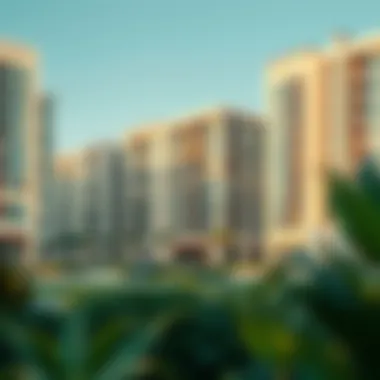
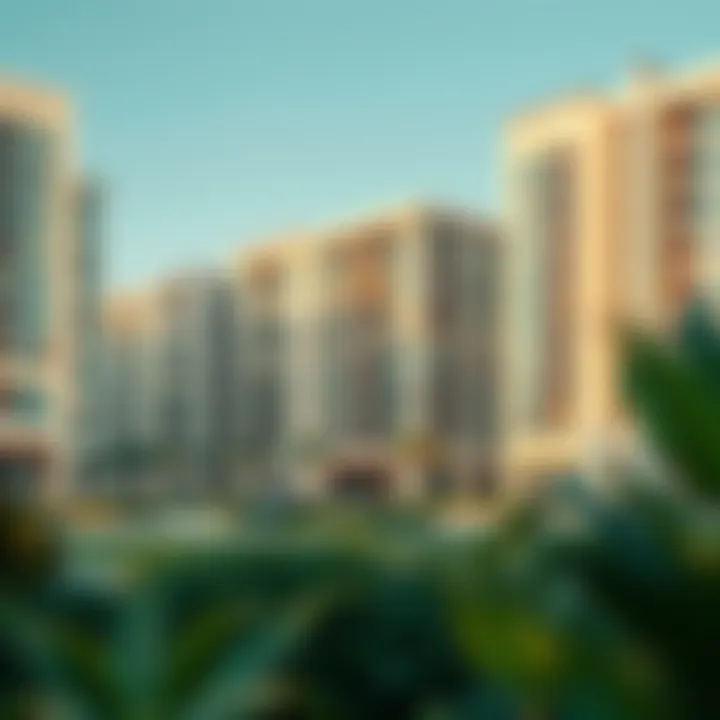
Innovative Designs Enhancing Footprint Appeal
Design innovation is the heart of footprint appeal, making properties not only functional but also aesthetically pleasing. Architects in Dubai are rethinking conventional designs, aiming for structures that leave a lasting impact. Such innovations include vertical gardens and solar panel installations that work hand-in-hand with residential or office spaces. By incorporating these elements, developers increase a property’s attractiveness as well as its sustainability credentials.
Additionally, adaptive reuse of existing structures has gained traction. This approach not only preserves the historical essence of a building but also reduces construction waste. An example of this can be seen in the renovation of older buildings in Al Quoz that blend contemporary designs with historical context.
To summarize, current trends in footprint real estate in Dubai highlight the movement towards sustainability, innovative design, and mixed-use developments. This creates an environment ripe for investment, one that resonates with modern living and ecological consciousness. As these trends continue to evolve, they offer valuable insights for anyone looking to engage with Dubai's dynamic property market.
"Investing in footprint real estate isn’t just about purchasing property; it’s about understanding where the market is headed and aligning with the future of urban living."
For more detailed insights and the latest updates, you may visit:
Investment Potential of Footprint Properties
Understanding the investment potential of footprint properties is vital for anyone looking to make their mark in the Dubai real estate market. As urban spaces get denser, the footprint—essentially the area a building occupies—becomes a crucial factor in determining the value and desirability of a property. With cities like Dubai rapidly expanding and evolving, investors need to recognize how footprint properties can impact their wealth generation strategies.
Footprint properties provide several benefits that enhance their attractiveness. First off, they tend to be strategically located, often positioned near essential services, leisure amenities, or transport hubs, making them appealing not just to investors, but also to potential tenants. This prime positioning often leads to a quicker return on investment, as these locations have higher rental yields compared to those that are more isolated.
Additionally, footprint properties typically allow for more extensive development possibilities. Investors may find opportunities to enhance or redevelop existing structures, increasing their property's value and appeal. Combining renovation projects with modern design trends can lead to significant appreciation in market value over time.
Here are a few specific advantages of investing in footprint properties:
- High demand for urban living: With more people flocking to metropolitan areas, especially expats in Dubai, footprint properties ensure access to conveniences that renters desire.
- Potential for mixed-use developments: Such properties can cater to both commercial and residential needs, broadening the investor’s market reach.
- Sustainability potential: As eco-friendly development expands, footprint properties can be adapted to meet green building standards, appealing to environmentally conscious buyers and tenants.
As the Dubai property landscape is ever-changing, this section will delve deep into two fundamental components of the investment landscape.
Analyzing Return on Investment
When evaluating the return on investment (ROI) for footprint properties, investors should consider several factors. The location is paramount; properties positioned in up-and-coming neighborhoods may yield higher returns than those in stagnating areas. Investors must analyze historical price trends and rental yields in the area to forecast future performance accurately.
Moreover, understanding the operational expenses tied to maintaining a footprint property is crucial. Higher upfront costs in prime locations can often be offset by the long-term value appreciation and rental income potential.
A typical formula investors might use to calculate ROI is:
plaintext ROI = (Net Profit / Cost of Investment) x 100



